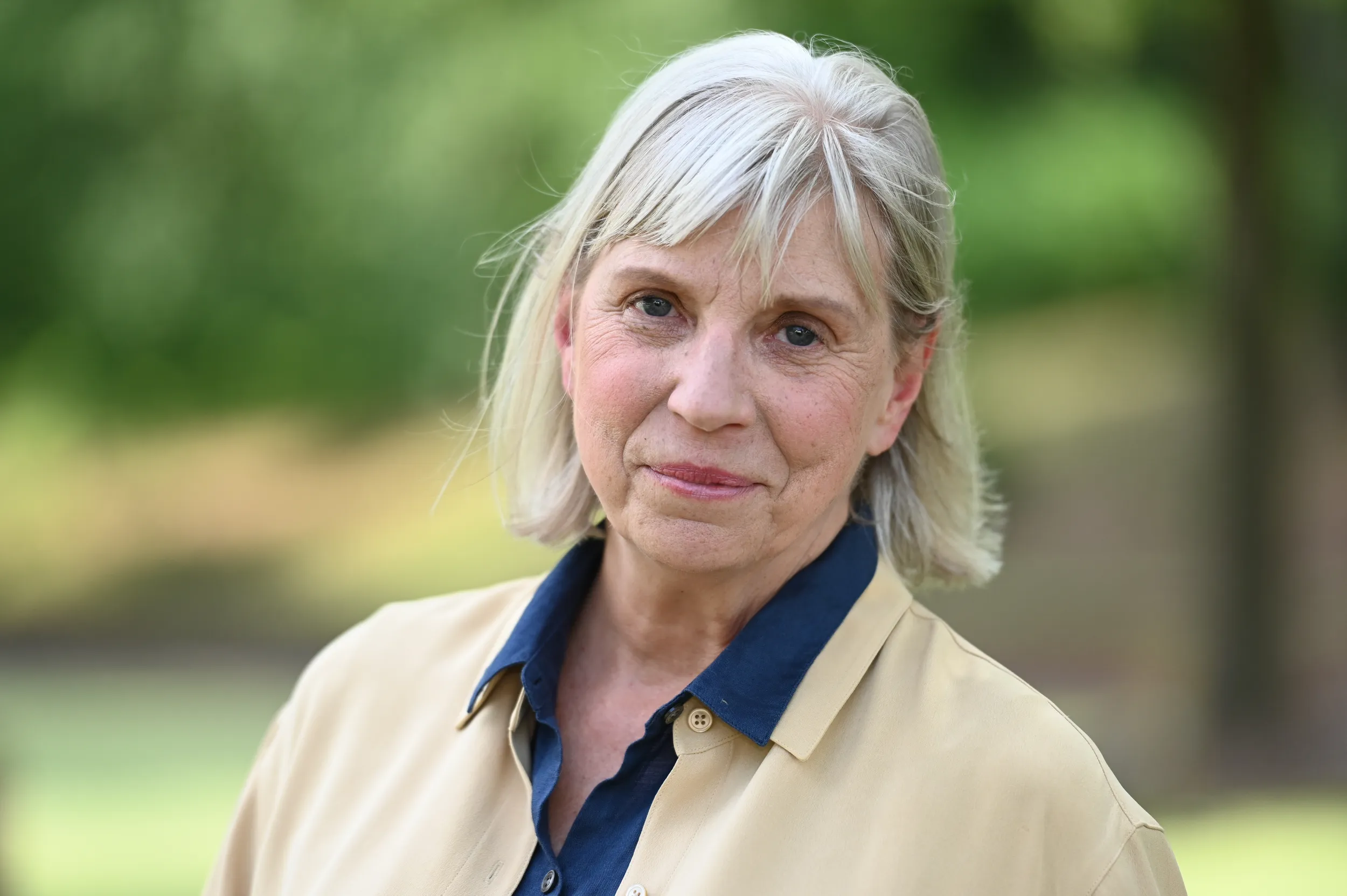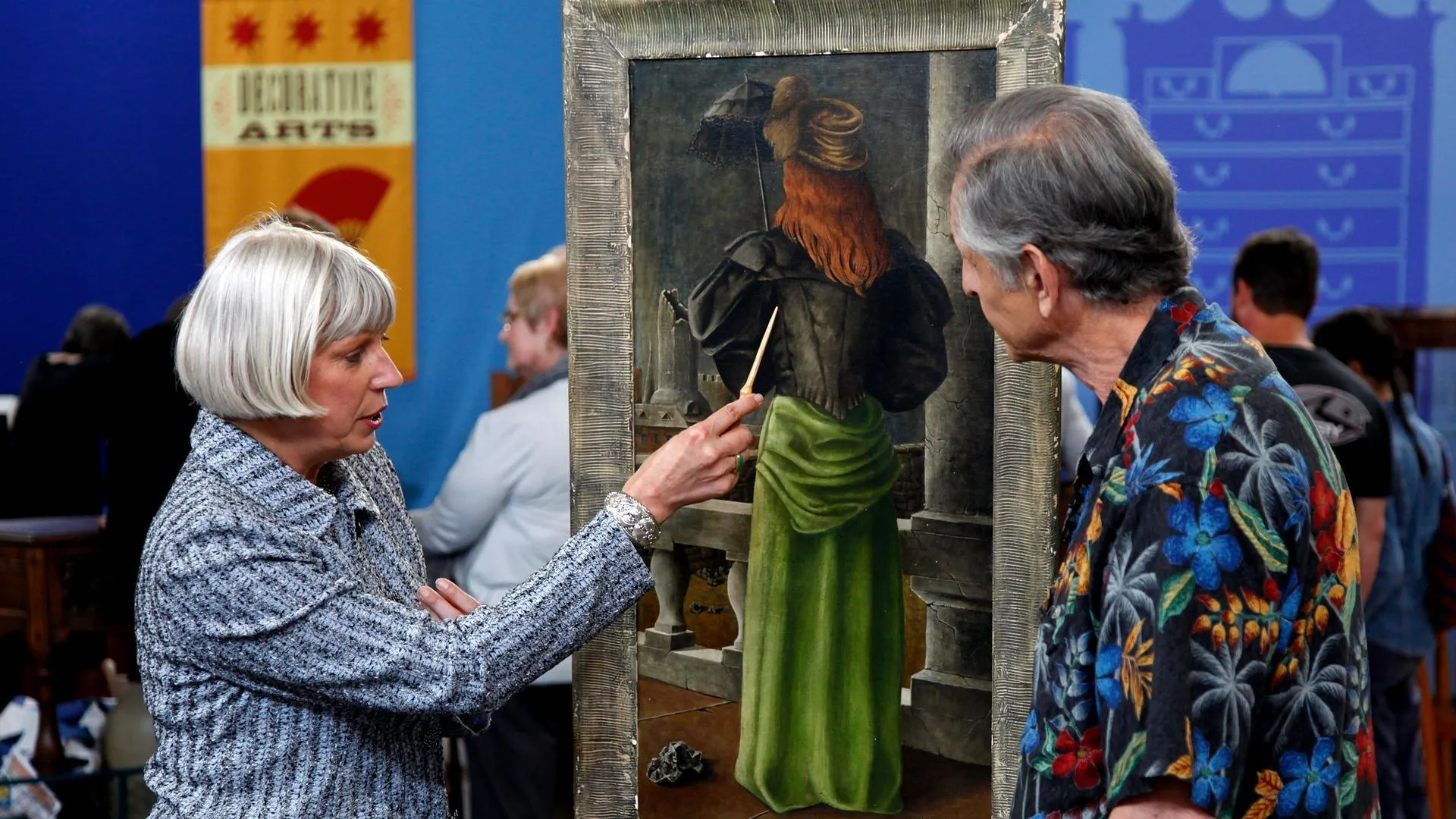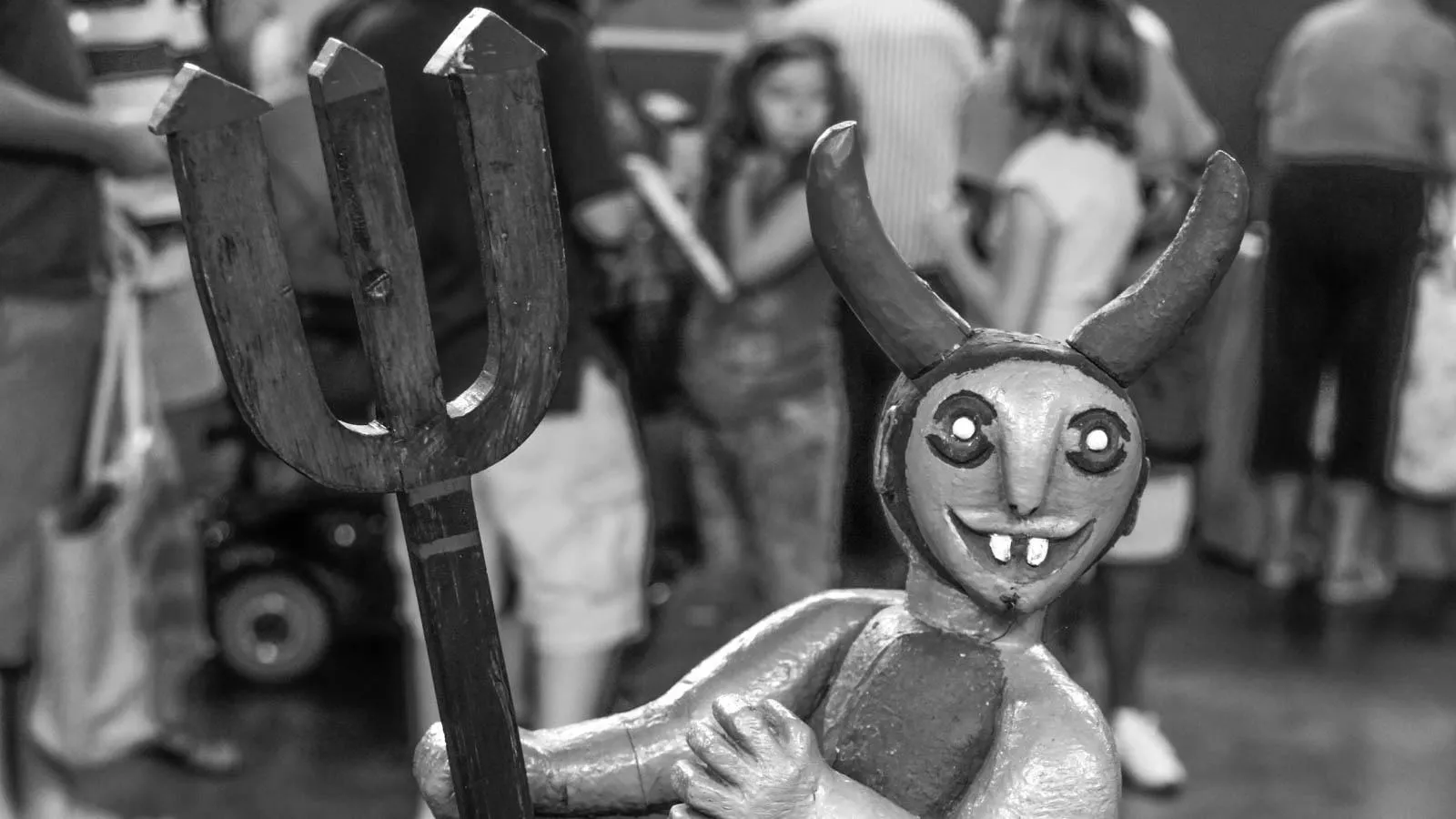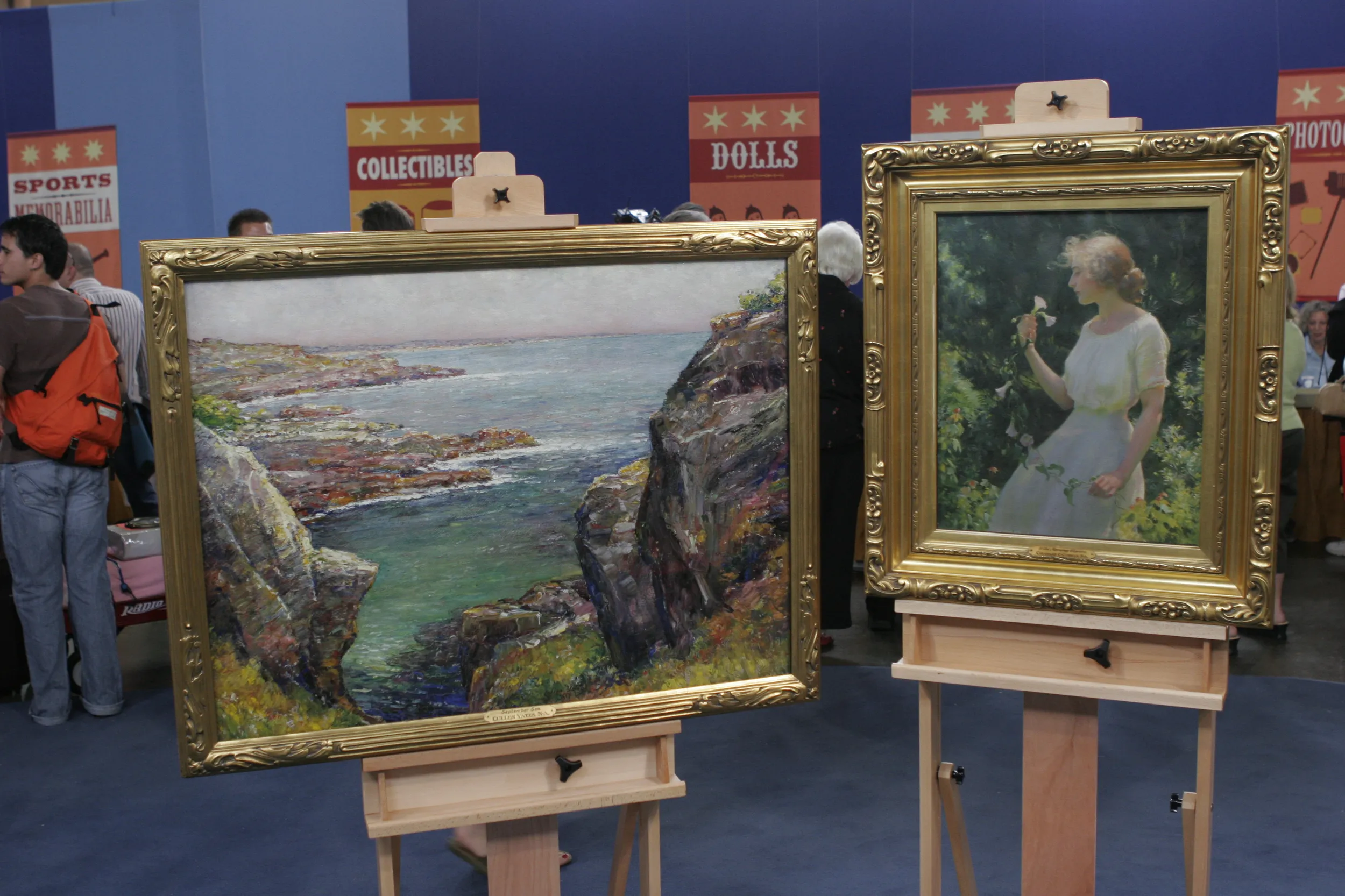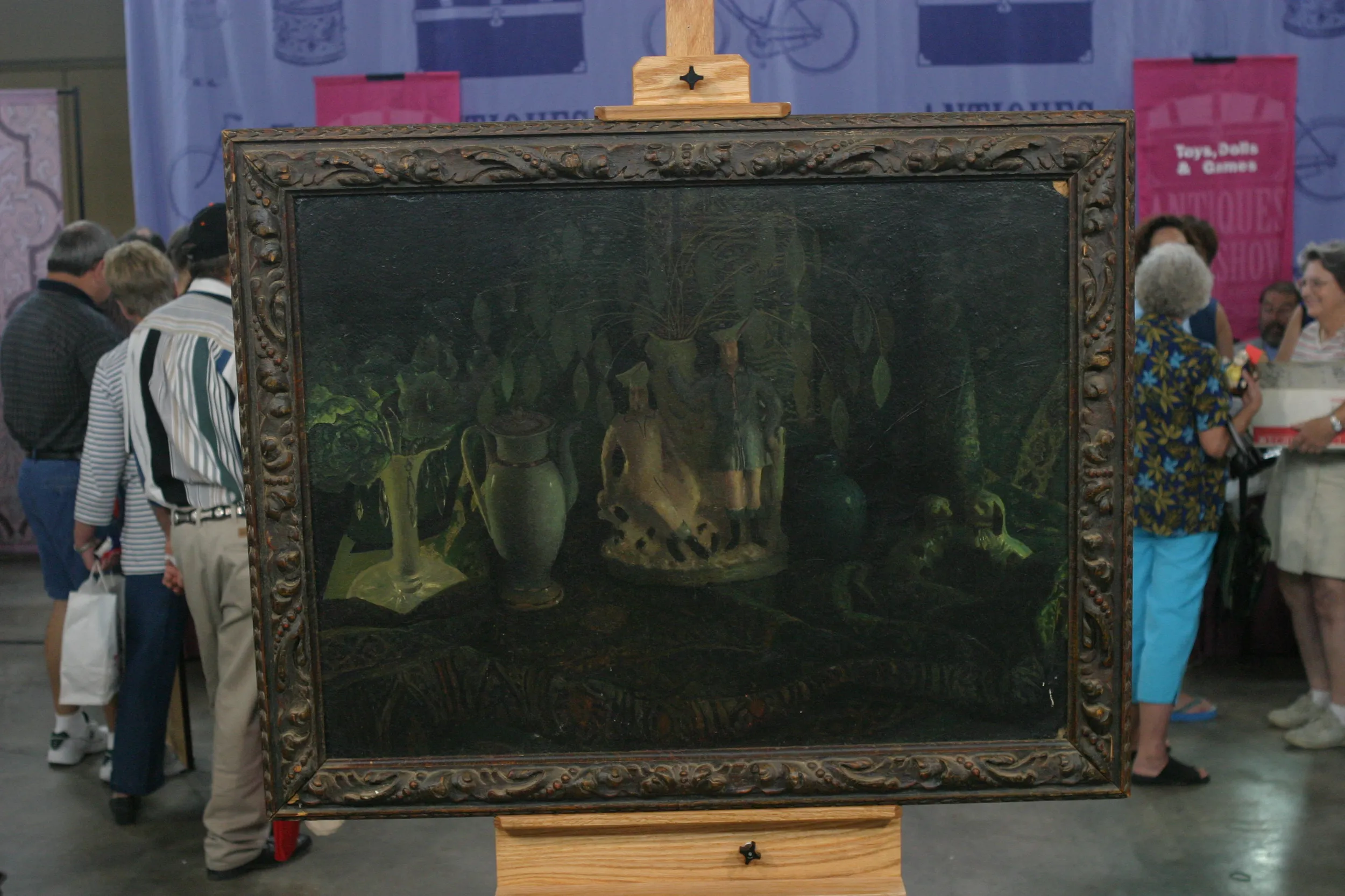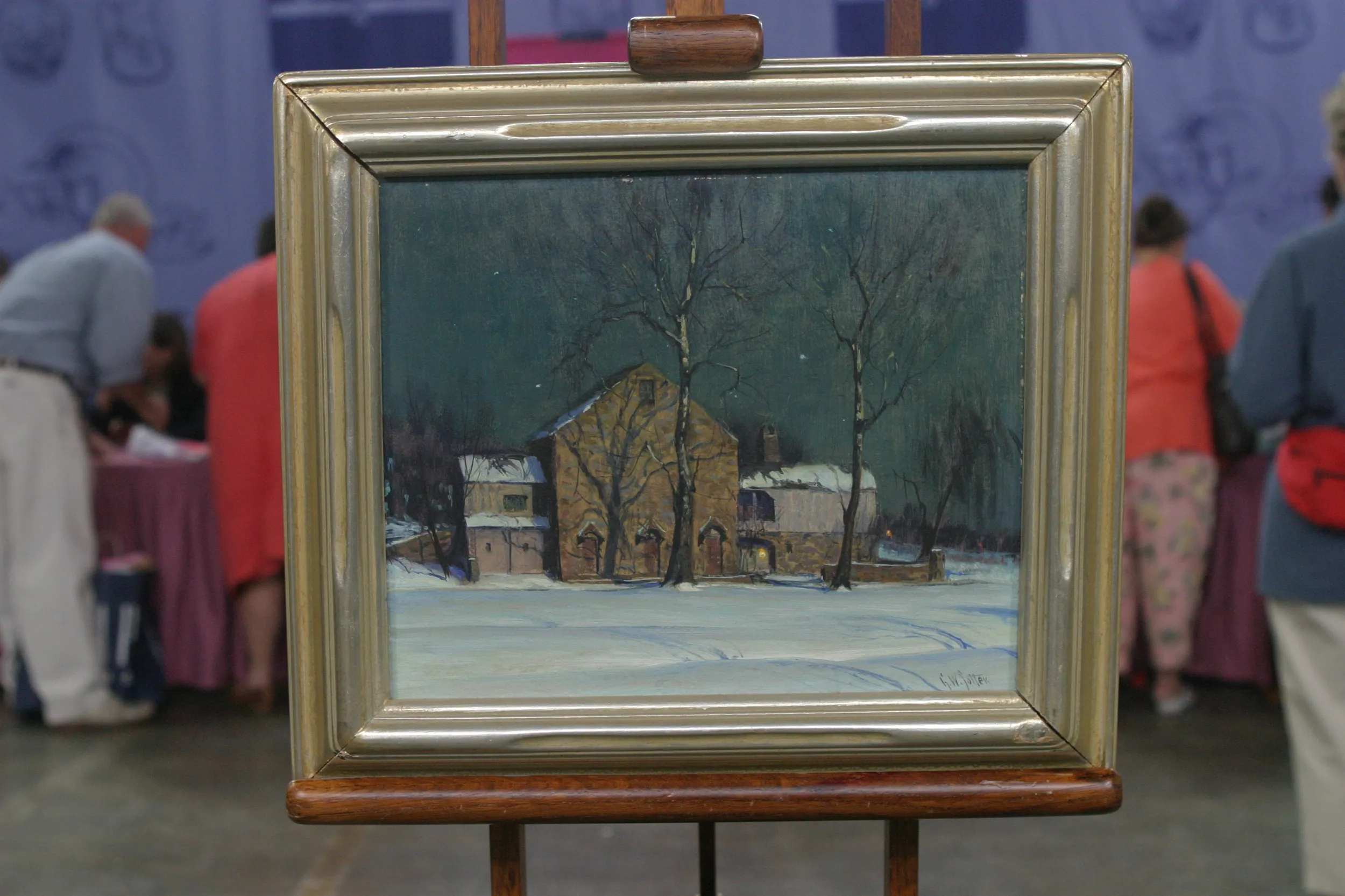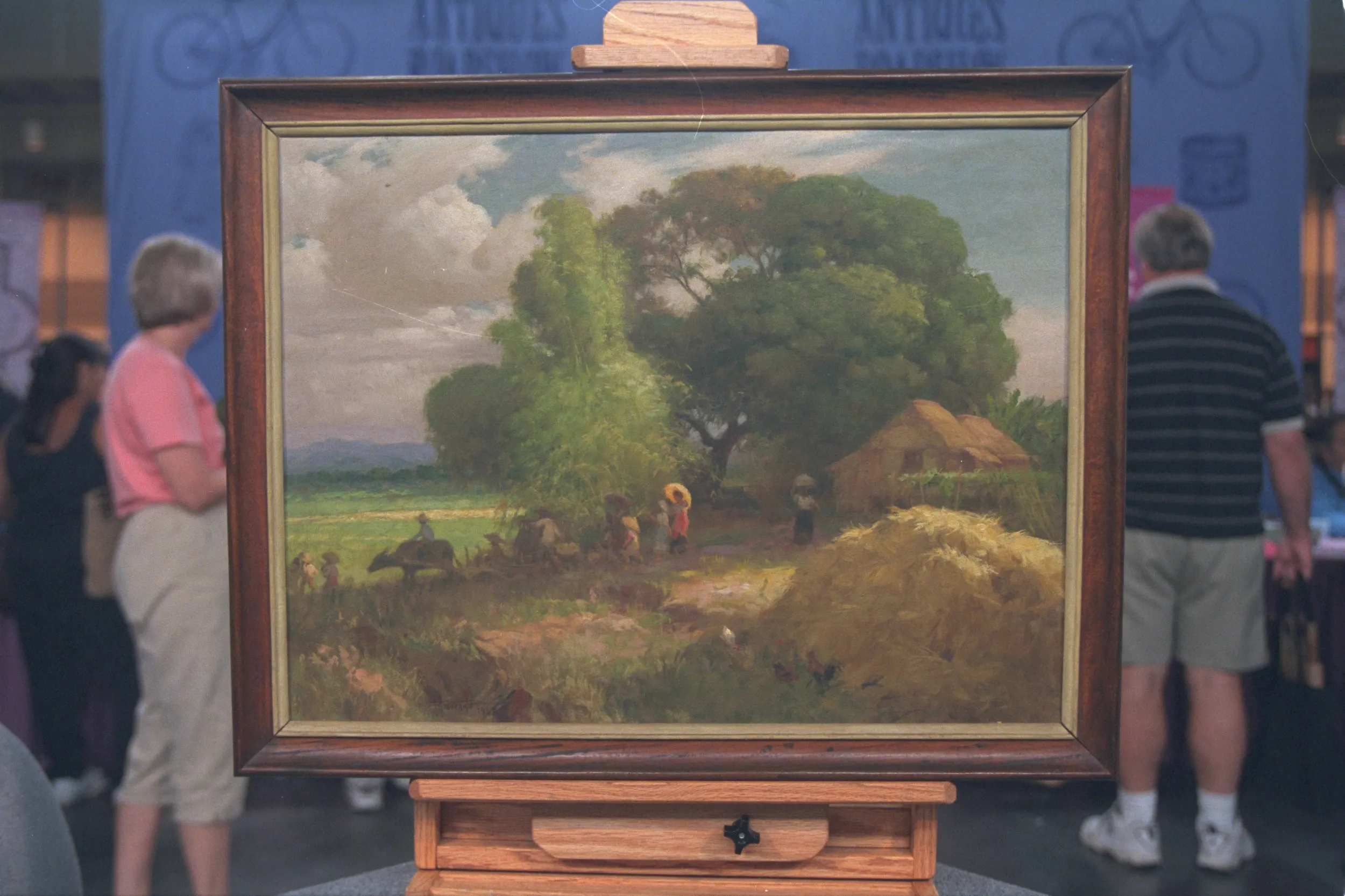GUEST: This painting was done by Demetrios Jameson, who was my father. Dad did this in, I believe, around 1947 when he was a student at Washington University in St. Louis, Missouri.
APPRAISER: Now, he studied with Max Beckmann at that time.
GUEST: Yes, he did.
APPRAISER: And Max Beckmann is this larger-than-life German expressionist artist, and you can really see he was picking up on the things that he was taught by the master.
GUEST: Yes, and he had very, very high regard for Max, and they communicated for many years after. This painting used to hang in my grandmother's house...
APPRAISER: It's a little spooky-- it didn't scare you?
GUEST: No, it doesn't, it never has. The only thing is, I keep waiting for her to turn around, and I've been waiting for about 60 years for her to turn around.
APPRAISER: He moved on to a different style, a more modernist style.
GUEST: Yes, he did.
APPRAISER: And so this is an early example of his work.
GUEST: This is... that's one of the reasons I picked this painting, other than the fact that I love it, is that we know very little about, you know, the values, or what have you, for this era. There's not very many like this.
APPRAISER: Of all the markets that have remained stable in our very wobbly economy, for American art, the modernist movement and the surrealist movement are very strong and very sought after. And this painting is just a terrific example of American modernism/surrealism. We have this crumpled-up piece of mysterious paper; we have this enigmatic figure with red hair and an acidic green skirt; then we have these cracks in the concrete; the broken silo; the crumbling columns. Central casting, wonderful surrealism. The painting is an oil on canvas. I would insure this one at $15,000.
GUEST: Oh, wow. Oh, great.
APPRAISER: I think he was a very important artist.
GUEST: Well, I agree, I think so as well.
APPRAISER: Well, you're a good son.
GUEST: (laughter)
